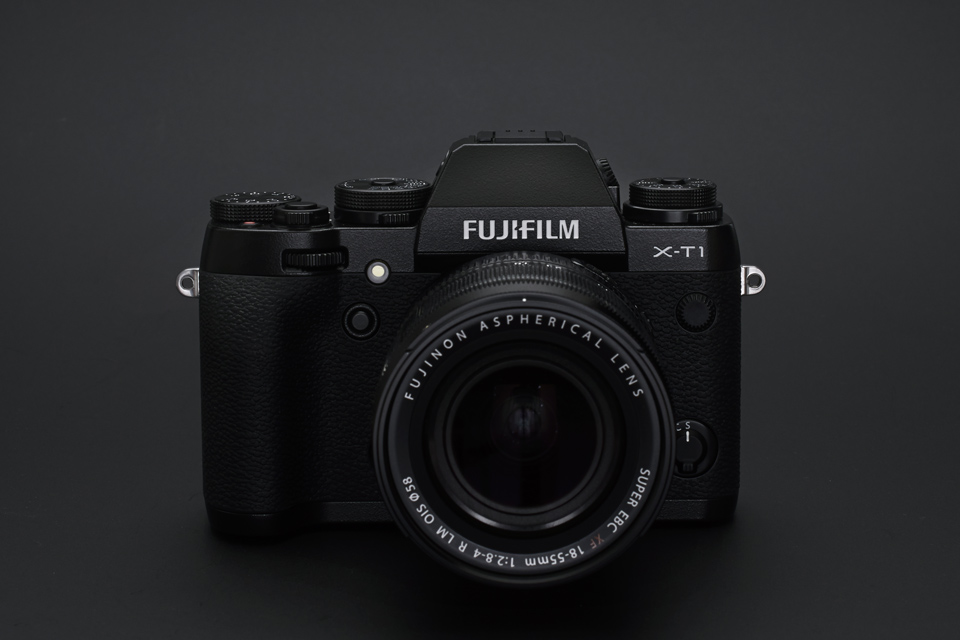PHOTO YODOBASHI
YODOBASHI CAMERA ONLINE PHOTO MAGAZINE

FUJIFILM X-T1 / SHOOTING REPORT
The X-T1 body is the latest addition to the Fujifilm's premium mirrorless interchangeable-lens X series. It boasts high picture quality, intuitive analogue operation, and high performance lenses. Since the X series started with the high-end X-Pro 1, it expanded the lineup to the lower-end by releasing the X-M1/X-A1 last year. And, the X-T1 fits in the class between the two high-end models: the X-Pro 1 and X-E2. Yet, it's the latest and the highest-end model as of now. While it inherits the X-E2's excellent picture quality (almost reaching the level of full size sensor) generated by the 16.3 Megapixel X-Trans CMOS II sensor and the EXR Processor II engine, the X-T1 has three new features: 1) tough dust/water-resistant full magnesium body, 2) EVF with the world's highest magnification ratio, and 3) simplified operation by many dials. What a package... Can a mirrorless camera have more features?
( Photography & Text : Naz )

It's difficult to capture grass material transmitting light because it's occupied by highlight and shadow and lack of ample amount of mid-tone. Still, the sharp lowpass-less sensor depicted the minute unevenness of the glass surface even though they look smooth for human eyes. The wide dynamic range is effective in depicting the wide tonal range from highlight to deep shadow of the table.

It wonderfully reproduced the glass glaze on the flower pattern of the cup saucer. In addition, it realistically depicted the textures of the different kinds of clothes on the table. And, the lace looks really solid.

The transparent red leave is beautiful. The sun is just outside of the frame, but thanks to the SUPER EBC coating, I could get the sharp image with a smooth blue tone even though I shot wide open at the tele-end.

Ultra high picture quality made possible by high-resolution X-Trans CMOS sensor along with Fujifilm color reproduction
Operation is brisk thanks to the fast phase detection as with the X-E2 and the high-speed image processing engine. And, the lowpass-less resolution let me read the letters on the newspaper when I displayed the original image at actual size. This high resolution isn't realized until the high-resolution lens and sensor are combined at a high level. For this report, I used the kit lens XF18-55mm F2.8-4, but I thought the quality is more than a kit lens because of the sharp rendition like a prime lens.

This is how a traditional and leading film-maker Fujifilm does colors and the red color looks particularly beautiful to me. I set film simulation mode to PROVIA. The white balance is pretty accurate and I didn't have to set it manually in almost all situations.


SLR-like style is a necessity rather than nostalgia
While many digital cameras have LCD screen as a main user interface to set various parameters, the high-end X series have independent dials that are placed where they are supposed to be placed. They have shutter-speed and exposure compensation dials on the top cover and an aperture ring on the lens. And, this X-T1 has additional dials for ISO sensitivity, drive mode, and metering mode. I guess this was made possible by switching the body shape from rangefinder style to SLR style with an EVF on the optical axis. Many people should welcome this film camera style. Fujifilm didn't choose this style just because of nostalgia but because of their pursuit for higher usability. Actually, when I took this shot, I preset exposure before looking into the viewfinder and I was able to shoot the best moment effortlessly.


The tilting monitor protected by a tempered glass allows a variety of shooting styles. And, "the world's fastest and largest" EVF doesn't only offer ultra high definition viewing experience, but also beats optical viewfinders with the Dual View showing framing and focusing views in the same screen. Plus, it provides a portrait view which keeps showing the camera settings in the same position even when it's held vertically. And, it has a variety of manual focus assisting features including magnification, peaking, and digital split image. So, you'll be tempted to choose manual focusing.

As a result of fine-tuning the image processing engine, ISO sensitivity can be expanded up to 51200 with the X-T1. So, ISO3200 is nothing but regular. And, even with a zoom lens, you can shoot darkness. Times have changed!


This ultimate X-mount body further perfects the system.
This new face of the X-series is a tough camera thanks to the dust/water resistant and freezeproof (up to -10° / +14F) full magnesium body with 80 points of sealing. And, the centered EVF allows more accurate framing on a tripod because now the EVF and the tripod thread are in line with the optical axis. The vertical battery grip is a great option because it provides a good balance of holding particularly when a large lens is mounted. And, as always, the picture quality can compete with full size sensor even though it's a compact camera with an APS-C sensor. This is a great advantage for a variety of situations including streets, sports, and landscapes.
Although it has the classical appearance, it has the latest features such as the five modes of auto bracketing: exposure, ISO, dynamic range, film simulation mode, and white balance. And, it's the world's first model to have the high-speed UHS-II compatible SDXC card slot. The smartphone app not only transmits photo data, but also provides live-view and enables remote shooting. This is a body that you can keep using for years as a main X-mount body and it will shoot in all situations.
( 13.02.2014 )